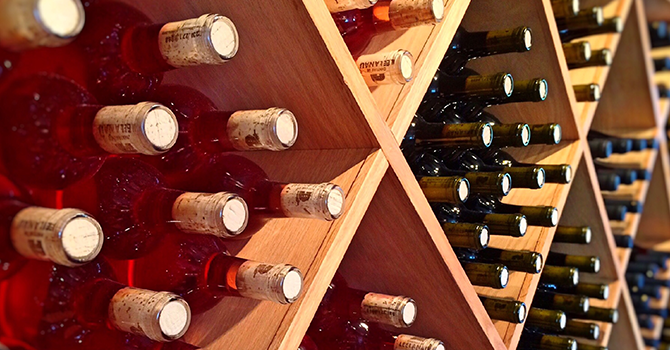In the Spring 2023 Budget, the Chancellor of the Exchequer announced that UK alcohol duties will rise on 1 August. Although the industry was accustomed to regular increases, wine duties have been frozen since 2019. The duty increase on fixed wines at 12.5% alcohol by volume (ABV) was around 6p per 75cl bottle. This is usually passed on to the consumer with little resistance.
But this year, the duty has increased by 44p per bottle.
And here's why
Until now, duty on spirits and beer has been calculated on a 'liter of pure alcohol' basis, meaning that the higher the ABV, the higher the duty charge. However, for wine and cider, the charges “per hectoliter of wine/cider” are calculated across different ranges depending on the strength. Since 2019, wines with an ABV of more than 5.5%, up to 15% (basically, most wines on UK shelves), still attract a duty of £297.57 per hectolitre.
For example, until August 1, the alcohol duty on a bottle of non-ABV wine of 12.5% was:
£297.57/(100 litres) x 75cl = £2.23
After 1 August, duties of £28.50 per liter of pure alcohol apply, so the same bottle is subject to a customs duty of:
(£28.50 x 12.5%) x 75cl = £2.67
To add further complexity, wines between 11.5% and 14.5% ABV will be treated as if they were 12.5% ABV for the purposes of calculating alcohol duty until 1 February 2025.
This means that a bottle of 14% Cabernet Sauvignon will attract a duty of £2.67 as above, where it would have been £2.99. On the other hand, a bottle containing 11.5% Pinot Grigio would also attract a duty of £2.67 as above, instead of £2.46, if this final measure did not apply.
The real losers are the high-strength wines. For example, at 15%, bold Australian Shiraz now attracts a duty of £3.21, an increase of 97p per bottle.
And this is all before VAT is applied, which of course adds another 20% to these increases. This means that the cost of a 12.5% ABV wine increases by 53p per bottle, and although it may have been selling for £6.50 in the supermarket previously, retail prices are actually rising by at least 50p.
Impact and response
The wine industry is concerned about the impact of the duty increase at a time when it is already suffering the after-effects of the pandemic. There was unprecedented demand during the UK's national lockdown, but consumers have since reduced their alcohol intake. More people are choosing alcohol-free alternatives, and the cost of living crisis has prompted consumers to reduce their spending on alcohol. Inflationary increases also put pressure on production costs, raw materials, and employee wages, so the wine industry is experiencing a perfect storm of external factors that squeeze, or rather eliminate, profit margins.
The increase has been defended by the government, arguing that it is necessary to increase revenues and discourage excessive drinking, particularly in relation to high ABV products. However, many affected companies are calling on the government to reconsider, or provide some form of compensation to mitigate the impact on businesses and consumers.
In response, some wine producers have reduced the ABV of their wines, keeping the strength at 10.5%, so the effect of the duty increase is just 1p per bottle. Modern technology allows wineries to reduce the alcohol content after the wine making process is complete. However, the UK represents a relatively small market for many international wineries, and the cost associated with applying this technology to a small batch is prohibitive. There is also an argument that the quality of the wine could be compromised.
If producers resist, UK bottlers will have to find an alternative way, invest in their own technology at prohibitive costs, or accept increased duties and raise their prices, leaving them unable to compete on UK retailers' shelves.
There is no doubt that increased duties will put pressure on prices, with the most likely scenario being that the cost is passed on to the consumer. This could lead to lower demand, creating further challenges for the UK wine industry.
This change in the way duties are applied to wine in the UK could result in additional margin pressures on bottling and distribution companies, especially those producing entry-level products. Profitability and cash flow may be an issue in the near term. Although it may be bumpy, companies in the fast-moving consumer goods sector, especially the beer, wine and spirits industry, can address some of these challenges by exploring solutions with the right partners.


